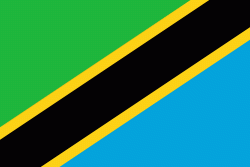Mbarali District (Mbarali district)
Mbarali District is one of the seven districts of Mbeya Region, Tanzania. It is bordered to the north by Iringa region and east by Njombe region. To the south the district is bordered by Mbeya Rural District and to the west by Chunya District.
In 2016 the Tanzania National Bureau of Statistics report there were 331,206 people in the district, from 300,517 in 2012.
Mbarali district is the most famous area for rice farming. The district is home to Kapunga rice project and Mbarali estate. The district hosts a very famous wetland called Ihefu, as well as the Usangu plain. Ruaha National Park is within the district to the north side.
The Mbarali District is administratively divided into 20 wards:
* Chimala
* Itamboleo
* Igava
* Imalilo Songwe
* Ihahi
* Lugelele
In 2016 the Tanzania National Bureau of Statistics report there were 331,206 people in the district, from 300,517 in 2012.
Mbarali district is the most famous area for rice farming. The district is home to Kapunga rice project and Mbarali estate. The district hosts a very famous wetland called Ihefu, as well as the Usangu plain. Ruaha National Park is within the district to the north side.
The Mbarali District is administratively divided into 20 wards:
* Chimala
* Itamboleo
* Igava
* Imalilo Songwe
* Ihahi
* Lugelele
Map - Mbarali District (Mbarali district)
Map
Country - Tanzania
 |
 |
| Flag of Tanzania | |
Many important hominid fossils have been found in Tanzania, such as 6-million-year-old Pliocene hominid fossils. The genus Australopithecus ranged across Africa between 4 and 2 million years ago, and the oldest remains of the genus Homo are found near Lake Olduvai. Following the rise of Homo erectus 1.8 million years ago, humanity spread all over the Old World, and later in the New World and Australia under the species Homo sapiens. H. sapiens also overtook Africa and absorbed the older species of humanity. Later in the Stone and Bronze Age, prehistoric migrations into Tanzania included Southern Cushitic speakers who moved south from present-day Ethiopia; Eastern Cushitic people who moved into Tanzania from north of Lake Turkana about 2,000 and 4,000 years ago; and the Southern Nilotes, including the Datoog, who originated from the present-day South Sudan–Ethiopia border region between 2,900 and 2,400 years ago. These movements took place at about the same time as the settlement of the Mashariki Bantu from West Africa in the Lake Victoria and Lake Tanganyika areas. They subsequently migrated across the rest of Tanzania between 2,300 and 1,700 years ago.
Currency / Language
| ISO | Currency | Symbol | Significant figures |
|---|---|---|---|
| TZS | Tanzanian shilling | Sh | 2 |
| ISO | Language |
|---|---|
| AR | Arabic language |
| EN | English language |















